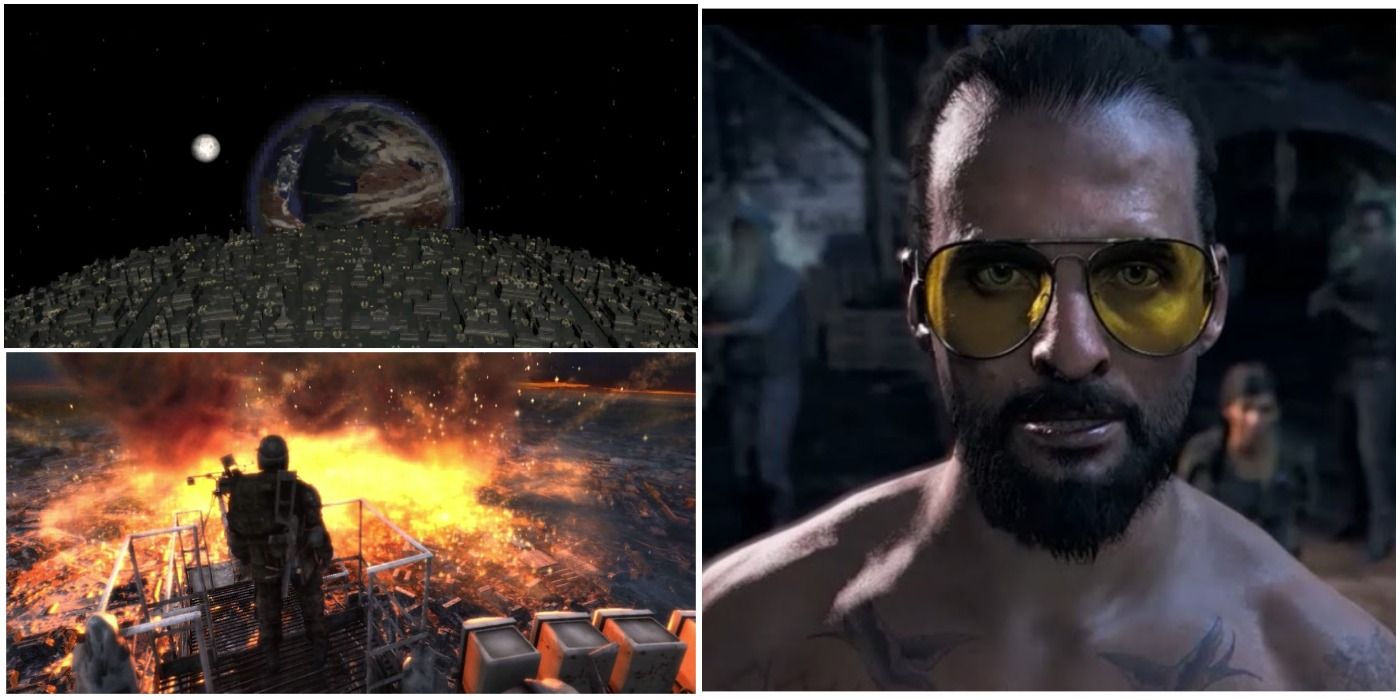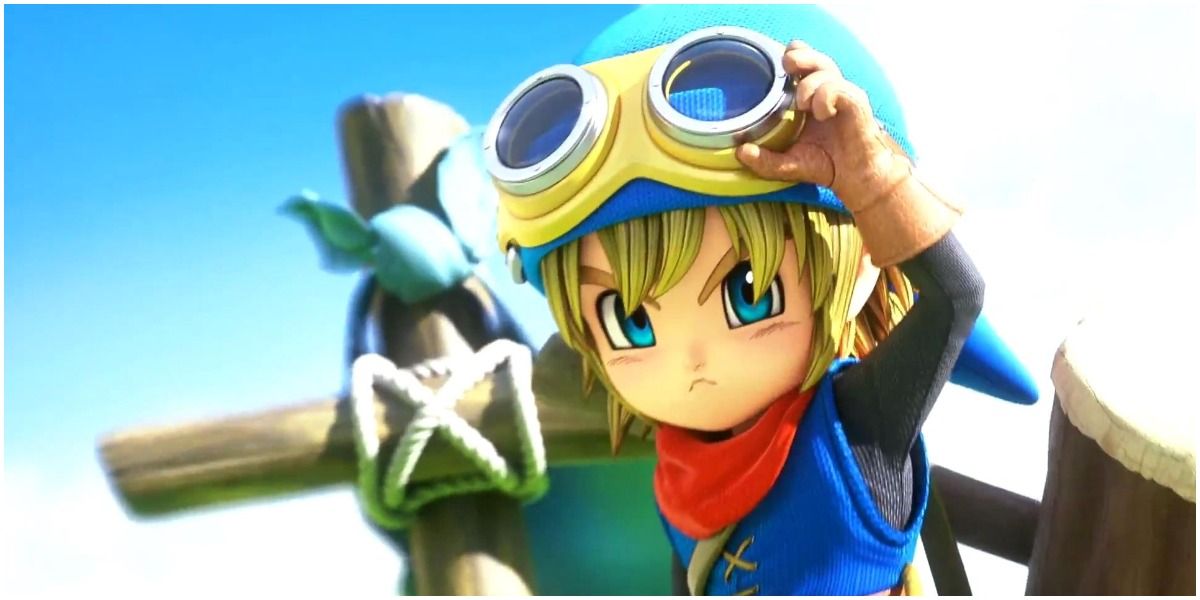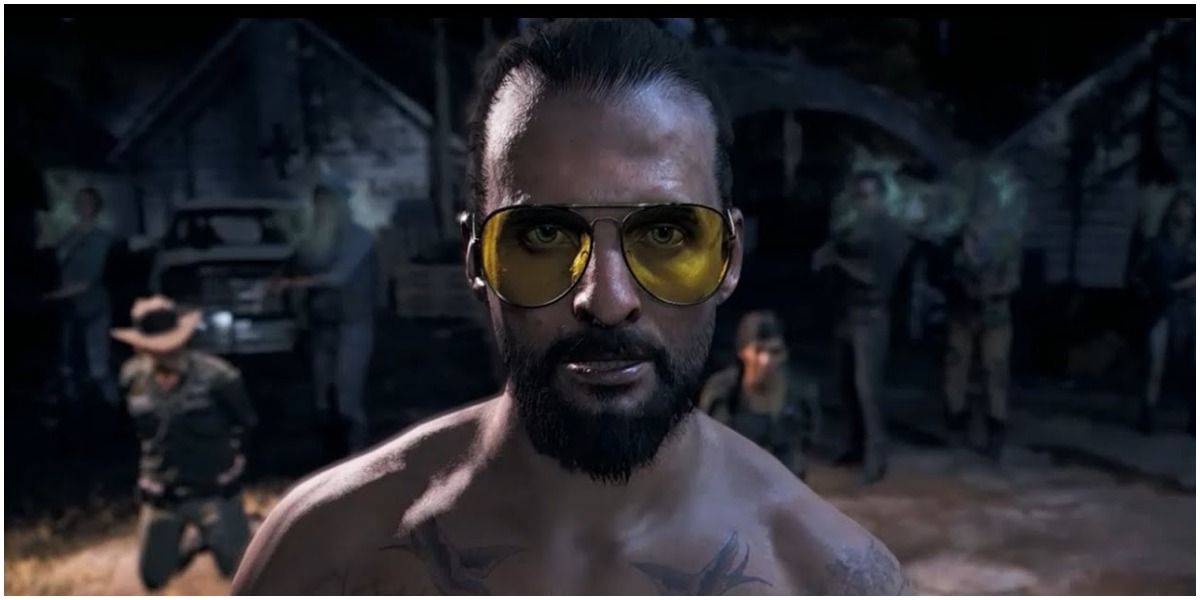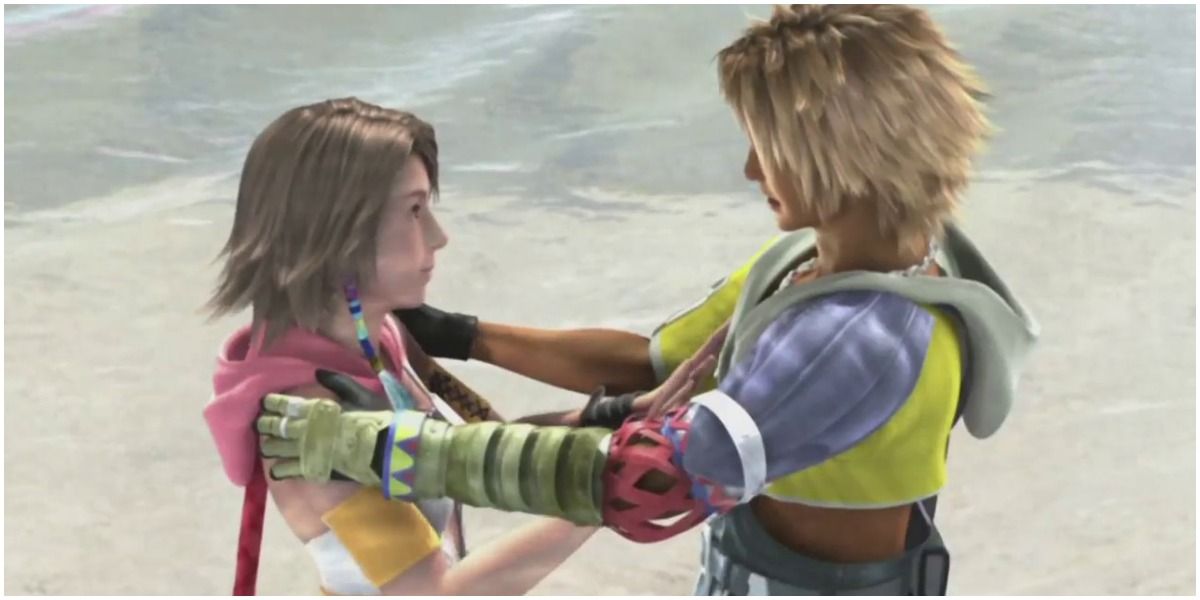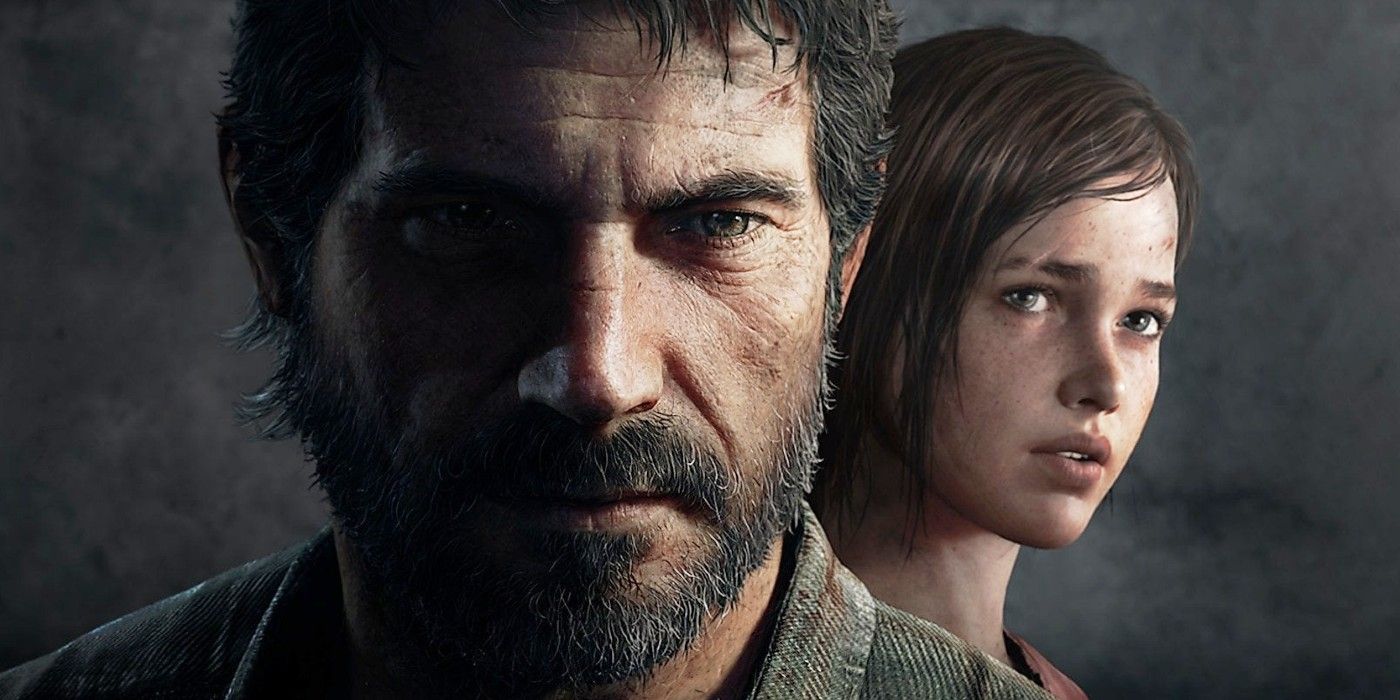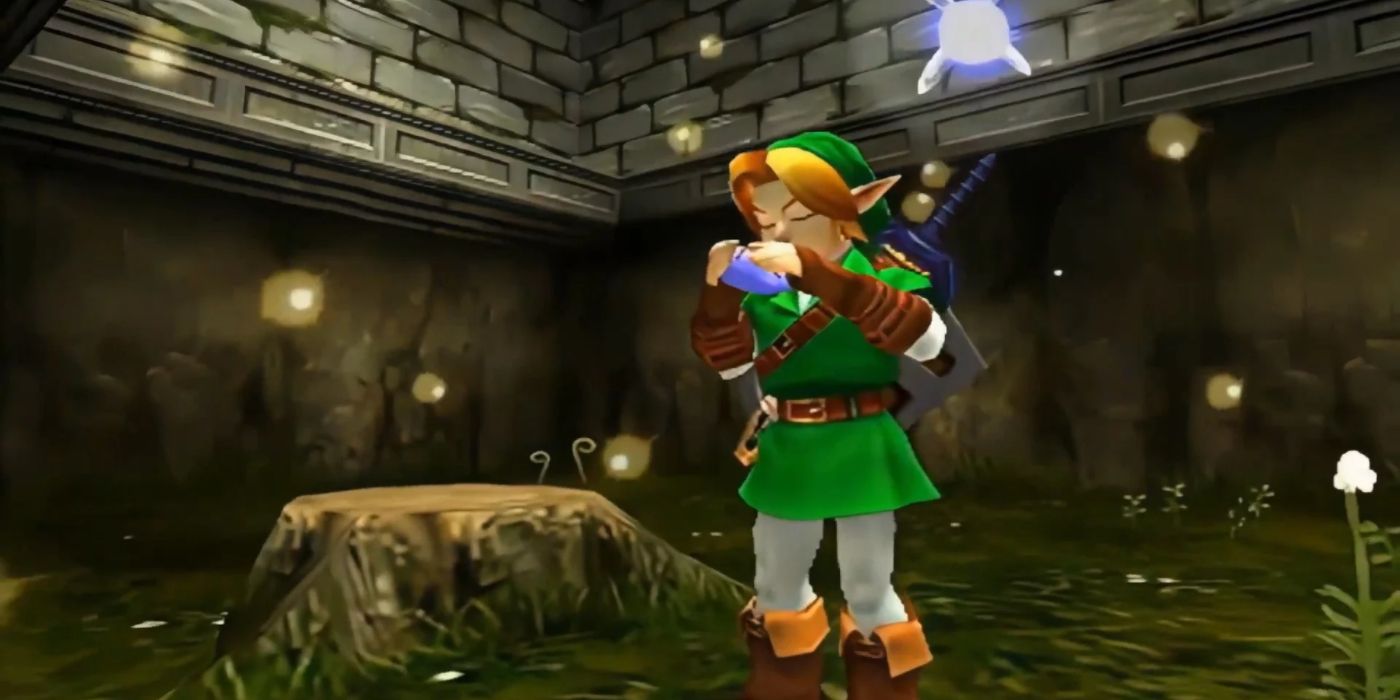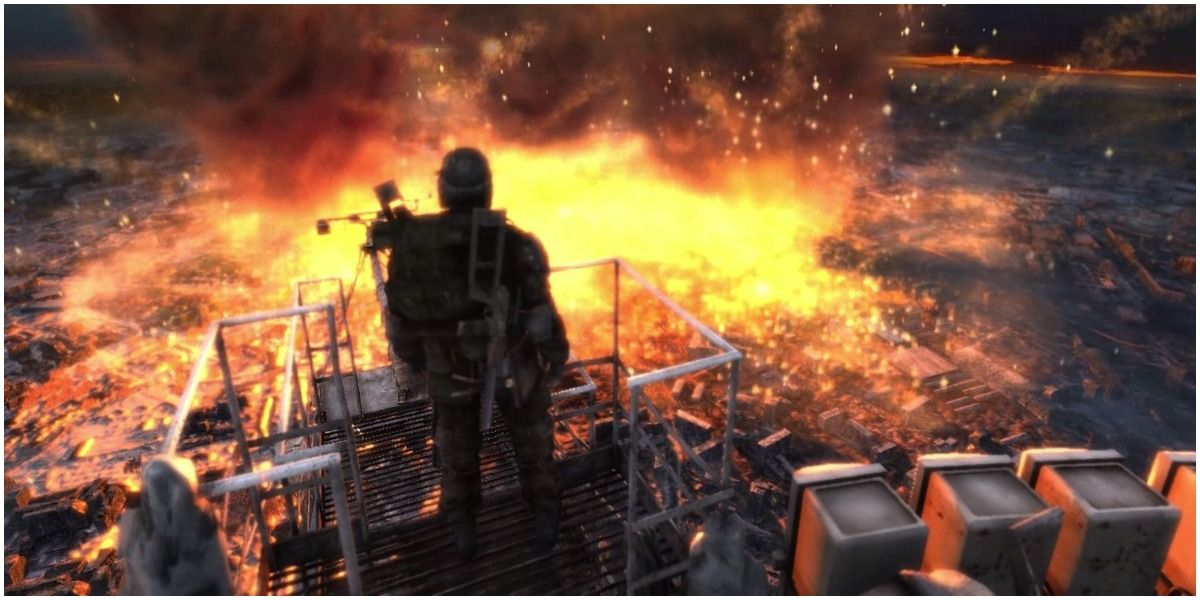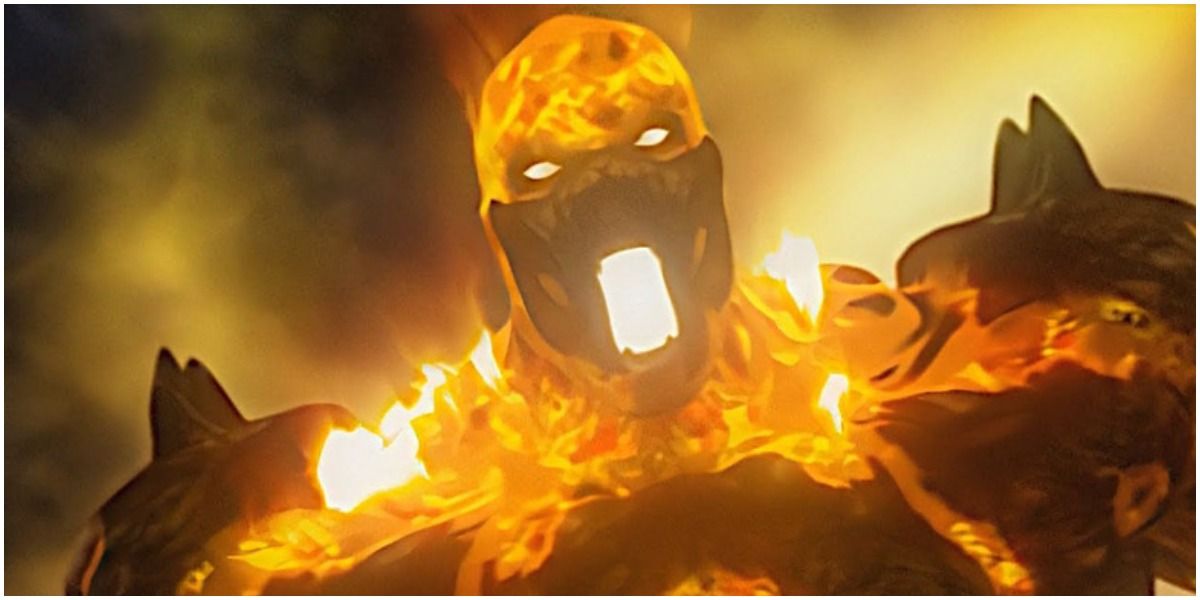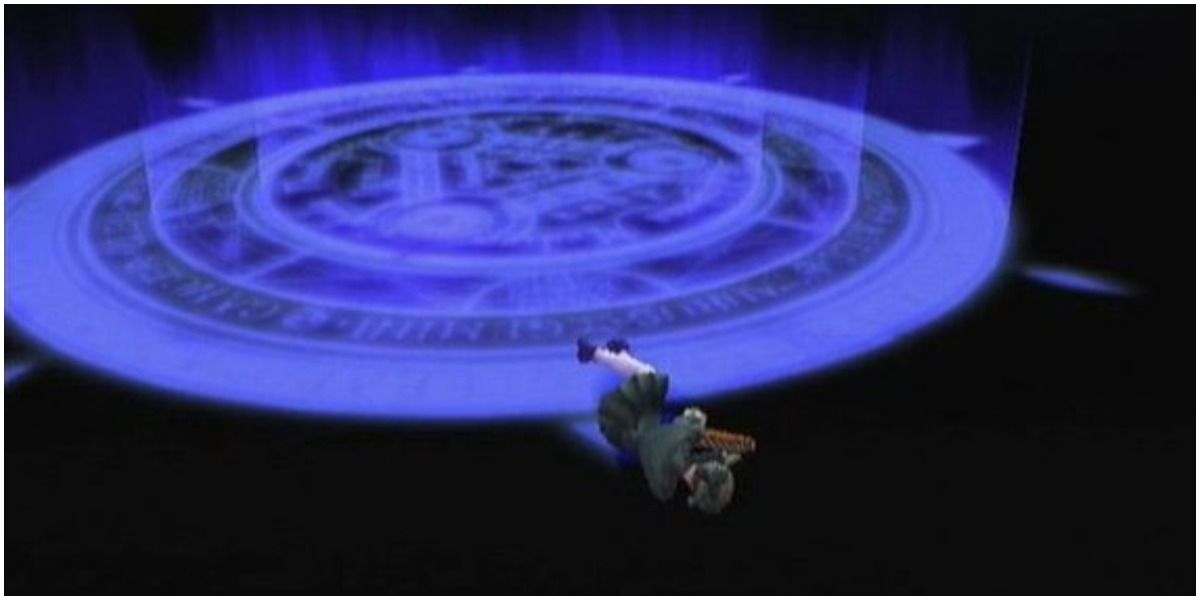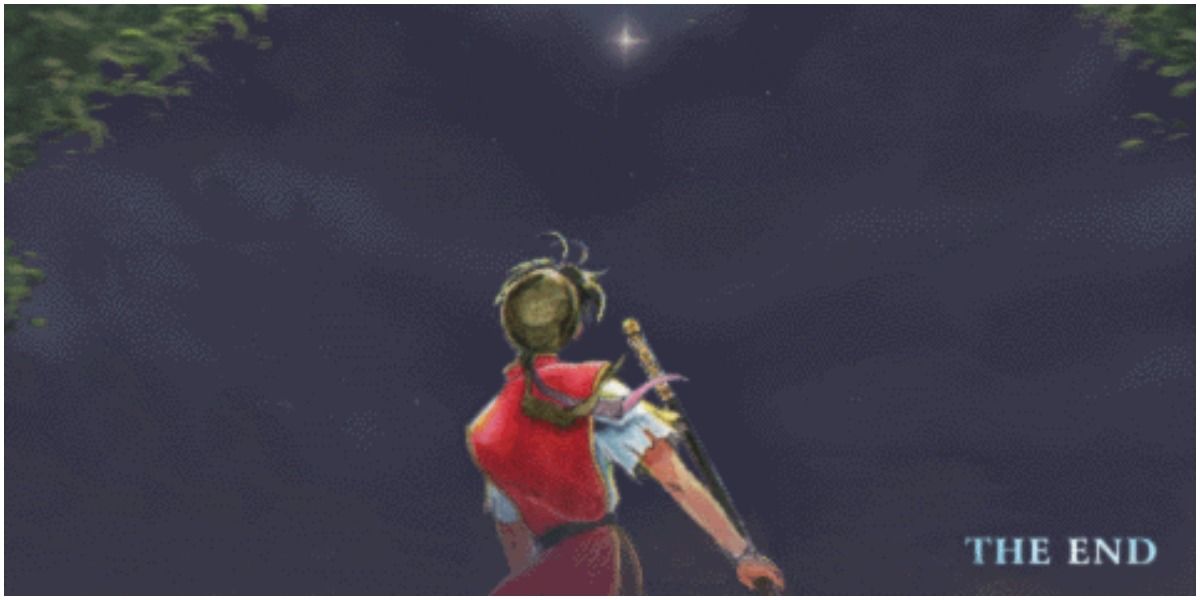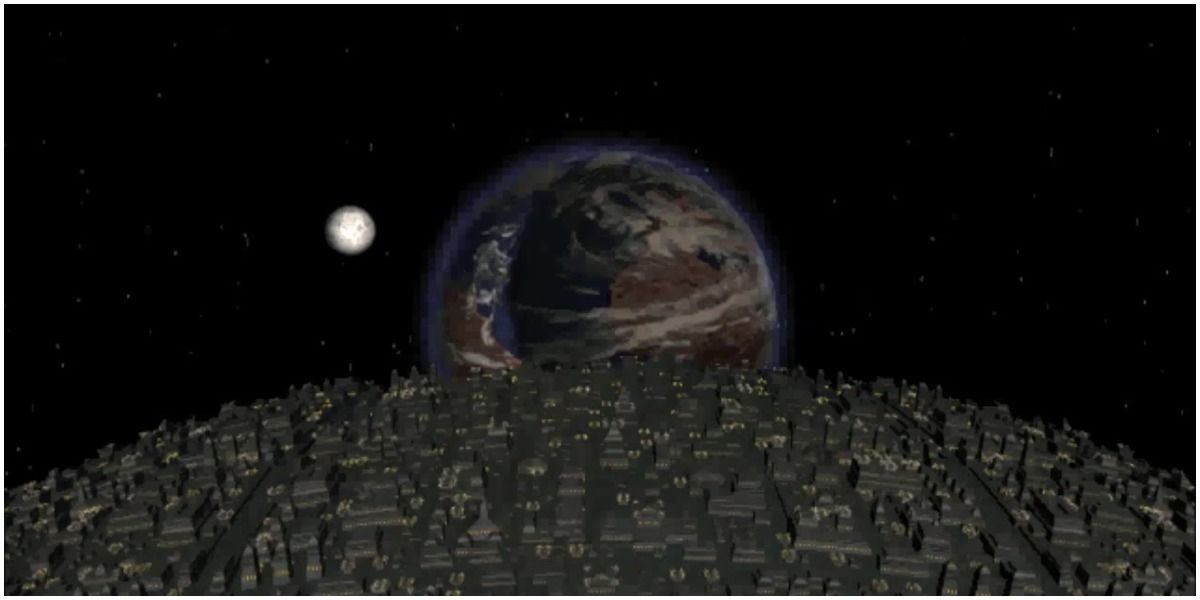Many games have multiple endings for the player to strive for. It helps add a layer of replayability that might not have otherwise come from the game. Usually, when a game has multiple endings, any bad ending is the one in which the player did not succeed or did not collect all of some special collectible. The bad endings often exist as a sort of punishment for players who did not fulfill the obligations of the game.
Typically, it is thought that any ending in which the characters succeed in their quest, saves the day, or is genuinely a happy sort of event, it is going to be the true ending. This is not always true, but it's nice to know that hard work on the player's end can leave some of the characters in a good place. However, some games have made the decision to make the more sad, tragic, and even brutal endings the "official" ending.
10 Making Deals With The Dragon Lord In Dragon Quest Builders
Dragon Quest Builders leads up to an epic boss fight with the Dragon Lord himself, one which can be quite the pain to try and avoid if the player is going for the alternate ending. In this ending, the player can make a deal with the Dragon Lord instead.
The whole story doesn't give the player experience for fighting monsters as they are in fact, meant to be the builder, not the warrior. Rubiss spends the whole game trying to dissuade the player from fighting the Dragon Lord, telling them that will take too much of their life force. So if the player actually does go through with making a deal instead of actually fighting them, like they've been told the whole game to avoid doing, they are actually following the canonical ending. It also makes sense, as in Dragon Quest Builders 2 the Fallen Hero is an opponent to face, and the Dragon Lord is still around, matching up with the alternate timeline ending of the first.
9 Just Walk Away In Far Cry 5
There are a few options at the end of Far Cry 5, all of which have their own endings. The whole game leads up to an epic finale against Joseph Seed, the megalomaniacal ringleader of Hope County's extremist religious cult organization Project at Eden's Gate. When they finally make it to him, they are given two options. The player can carry on with the arrest after taking out the other Seed siblings, or they can walk away. There is even a secret ending where instead of cuffing Seed at the first confrontation, they just wait. That ending ends the game extremely quickly, even if it technically results in the best possible outcome.
However, if the player chooses to Walk Away during the final confrontation with Joseph Seed, it will lead them straight to the canon ending where they don't fight him, he remains alive, many parts of the story are left unresolved, and the cult still has some traction. This ends up being the canonical ending, as seen by the Far Cry 5 spinoff Far Cry New Dawn.
8 Accepting The Loss Of Tidus In Final Fantasy X-2
Players learned throughout Final Fantasy X and X-2 that Tidus was only ever as real as Yuna's Aeons. He wasn't a time traveler, he was just a dream and every tangled piece of messy lore that goes with it. There are multiple endings to X-2, all of which are based on if the player managed to trigger certain events throughout the game, mostly in Chapter 3.
This is one where the game has players constantly fighting over which is the real ending. However, the entire game is leading up to Yuna learning to accept that Tidus is gone and does one final mission with the Gullwings.
7 Dooming Humanity In The Last of Us
The Last of Us is an emotionally charged story where Joel has been keeping Ellie, the singular person known to have an immunity to the disease wiping out entire populations, safe. In the end, there is an option to hand her over in order for a vaccine to be made and thus saving the world. However, it will likely kill her.
Canonically, as evident by her role in the sequel, Joel does not hand over Ellie at the end of The Last of Us. Ellie is still well and alive for Part 2 and that makes it very clear as to how the first game is meant to end, with Joel condemning the entire human race to extinction.
6 Legend of Zelda: Ocarina of Time Canonically Dies
Canonically, Link does not survive the battle against Ganondorf in Ocarina of Time, but most players are going to end up beating him anyway. This causes a lot of confusion as to why some subsequent games are the way they are, but they start to make sense when looking at them from the perspective of the Fallen Hero timeline instead of the Hero Triumphant.
During this battle, Zelda sends link back in time to a point where Ganondorf had not yet taken over Hyrule. It's there that it becomes confusing as the naming scheme of the Child Era and Adult Era make things complicated, but the long and short of it is that Ocarina of Time canonically branches up the timeline, with Link dying as the canonical ending.
5 Dark Ones Are Destroyed In Metro 2033
Some games have canonical endings with leadups that feel a little awkward. Metro 2033 has a canonical ending where the player lets a nuclear attack on the Dark Ones happen, which leads to the following game.
What happens is that if Artyom does not rack up enough of the positive moral points to get the good ending, or the player decides not to shoot the guidance system, they are gifted with the Dark Ones being killed in a mental battle. Then Botanicheskiy Sad is attacked with bombs, and Artyom is trying to justify his actions of destroying the Dark Ones out of love for the rest of mankind, but he is clearly troubled at the Earth's destruction that was clearly his fault.
4 Mortal Kobat Armageddon Leads To A Confusing Sequel Otherwise
None of the Mortal Kombat games are exceptionally great at their storytelling. The point is to destroy opponents in one-on-one battles. People don't really play them for their stories, It really lends itself better as a multiplayer party game over a story-driven solo adventure, so most players won't even see anything at the end.
Canonically at the end of Mortal Kombat Armageddon, Shao Khan manages to defeat Blaze which sets in motion the events of the next game in the series. At the end of the battle, Blaze has a moment where he flashes into a bigger blaze than usual and then explodes. Shao Khan's strength increases tenfold, and the Forces of Light were no longer able to stop his final invasion. He was able to merge each world with the Outworld, and it's not the greatest way things could have panned out, considering what happened at the beginning of Mortal Kombat 9.
3 There's A Sacrificial Purification In Shadow Hearts
Any game where the canonical ending involves a large number of characters dead, dying, or downright miserable cannot be considered a good ending by any means. Shadow Hearts is no different.
At the end of the game, James O'Flaherty sacrifices himself in order to purify Elaine's body, which in turn causes the Monastary to burn to the ground. Edward and Koudelka end up procreating but split up before either of them realize this. It's rather unsatisfying, but it does end out being a decent enough cliffhanger for future installments.
2 Suikoden Is Even Too Much For The Protagonist
Most of the Suikoden games have at least one alternate ending that can only appear if the player has gained all 108 characters. Suikoden 5 for example has multiple endings based on their choices, how many stars they have, and whether or not they managed to succeed in any of these scenarios.
In the original game, no matter what ending the player gets, Tir McDohl disappears the second the Liberation Army has declared victory. The canonical ending involves him leaving alone in the dark, with no word to anyone. His best friends are all dead or presumed dead, his trusted advisor died moments before, and he is cursed to have his rune devour the souls of all those around him he cares for. Canonically he never gathered all the stars, as evident by the fact that if the player ports save files from the original game to 2 and then find him hiding out, he is completely alone and wants nothing to do with them.
1 X-COM Relies On The Bad Ending In Order To Start The Sequel
X-COM is one of those games that does not want to hold the player's hand too much. Aliens invade and are trying to conquer the earth, with the player part of the resistance.
During the final mission, the player has to make it back to their carrier. If they make it back in time, they are able to overcome the aliens. If they don't, the aliens manage to destroy it and the player is treated to a number of interesting explosions they almost managed to prevent. However, there's also an even worse, and more dastardly ending. If the player fails to overcome the aliens entirely, the Interceptor appears and shoots the earth with this giant green laser, reducing it to a barren waste.

